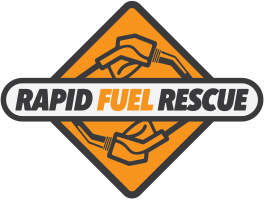Ultimate Wrong Fuel Guide to ASX Fuel Challenger
Ever had that “uh-oh” moment at the fuel pump?
One second you are topping up your Mitsubishi ASX or Challenger. The next, you realise you just poured the wrong fuel into your pride and joy.
It happens more often than you think.
A split-second mix-up can lead to hours of stress.
But here’s the good news — it is fixable.
I once almost did it myself. Diesel pump in hand. Daydreaming. Then I noticed the green label just in time. Close call.
Stranded with the wrong fuel? Call Rapid Fuel Rescue now for fast, reliable wrong fuel recovery – we’ll get you back on the road in minutes!

So, what counts as “wrong fuel”?
Simple answer: anything your car was not built for.
If your ASX runs on petrol, diesel will clog its system.
If it runs on diesel, petrol will strip away the lubrication your engine needs.
Think of it like giving someone a glass of juice when they asked for water.
They might sip it. But it will not go down well.
Why it happens
You are not alone if you have done this.
It is easy to grab the wrong nozzle when you are in a hurry.
Some pumps look almost identical.
Some labels are faded.
Some drivers borrow a different car for the day and forget it takes a different fuel.
Late nights, phone calls, kids in the back seat — distractions are everywhere.
Spotting the mistake early
Caught it before you started the engine?
That is the best-case scenario.
Once you turn the key, the wrong fuel gets pulled into the system.
The sooner you stop, the less damage there will be.
Signs you may have driven with the wrong fuel:
- The engine stalls or struggles to start.
- You hear odd knocking sounds.
- There is smoke or a strange smell from the exhaust.
- Performance drops fast.
Why the ASX and Challenger need quick action
The Mitsubishi ASX and Mitsubishi Challenger (also called the Pajero Sport in some markets) both have sensitive fuel systems.
Their injectors work under high pressure.
That means any contamination spreads quickly.
Diesel models, especially, rely on the fuel to lubricate vital parts. Petrol burns faster and drier, which can leave those parts exposed.
Petrol engines, on the other hand, are not built to handle the heavier, oily nature of diesel. It can cause blockages in no time.
What you should do right away
Step one: stay calm.
Panic will not help, but quick thinking will.
If you have not started the engine — do not start it.
Call a fuel rescue service. They will drain and flush the tank safely.
If you have already driven:
- Pull over somewhere safe.
- Turn the engine off.
- Call for roadside assistance.
This is not a DIY moment.
Home fixes often make the damage worse.
How fuel rescue works
Wrong fuel recovery teams bring a specialist pump system to your location.
They remove all the contaminated fuel from the tank.
Then they flush the lines to clear any residue.
Finally, they refill with the right fuel and get you moving again.
The whole process can take under an hour if you catch it early.
Common myths
“I can just top up with the right fuel.”
No — mixing fuels will not “dilute” the problem. It will spread it.
“A little bit of the wrong fuel will not hurt.”
It can. Even a few litres can damage injectors or pumps.
“I can siphon it out myself.”
Modern fuel systems are sealed. Siphoning is not only messy but risky.
Costs to expect
Fuel recovery is much cheaper than engine repairs.
In most cases, you are looking at a few hundred riyals (or dollars), not thousands.
Leave it too long, and the repair bill can climb into the thousands.
Injectors, pumps, and even full engines have been lost to wrong fuel damage.
Tips to avoid it next time
- Check the label every time before pumping.
- Use the same brand of fuel station when possible.
- Add a reminder sticker near your fuel cap.
- Avoid filling up when you are tired or distracted.
A friend of mine now repeats the fuel type out loud before picking up the nozzle. It sounds silly, but it works.
The role of modern tech
Some newer ASX and Challenger models have cap designs or sensors that make it harder to insert the wrong nozzle.
But these are not foolproof.
Good habits are still your best defence.
Travel tip for ASX and Challenger owners
If you drive abroad, check the fuel names.
In some countries, petrol is called “benzine” or “gasolina.” Diesel pumps might be black instead of green.
A quick Google search before you travel can save you a lot of trouble.
Why quick action matters most
The moment wrong fuel hits your ASX or Challenger, the clock starts ticking.
The faster it is drained, the less chance of lasting harm.
Think of it like spilling water on your phone. The sooner you dry it, the better your odds.
Final thoughts
Wrong fuel mishaps are annoying, sure. But they are not the end of the world.
With a quick response, your ASX or Challenger will be back on the road in no time.
So, keep calm, act fast, and call the experts when it happens.
And maybe double-check that nozzle before you pull the trigger next time.
